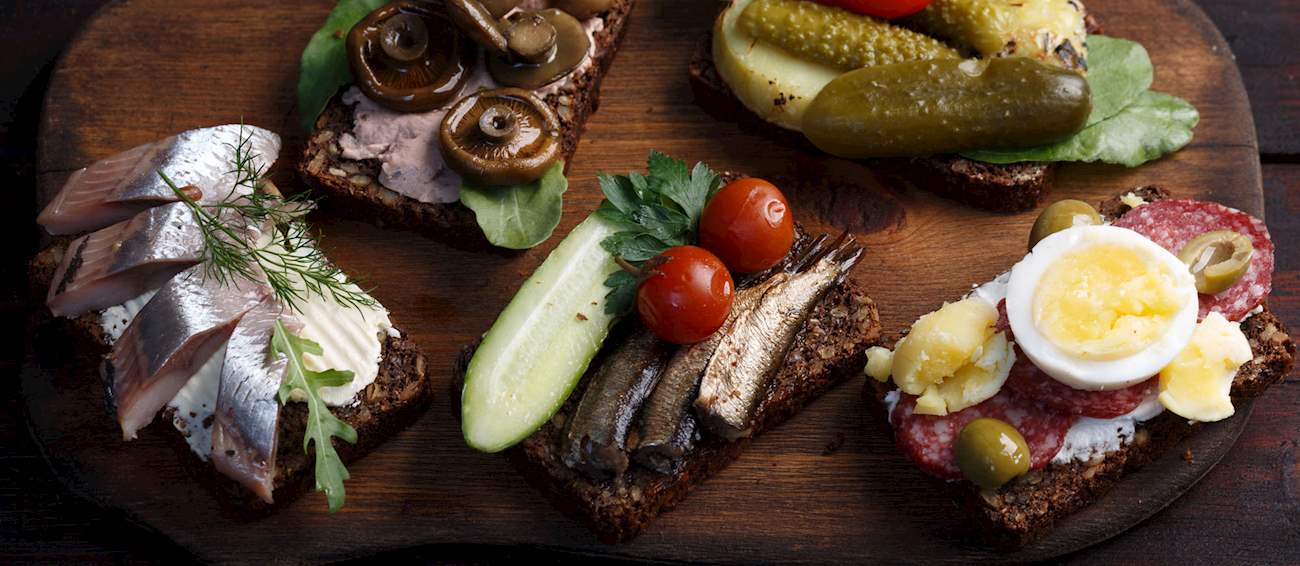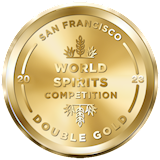TABLE OF CONTENTS
Best Danish Foods
The epitome of a cozy Sunday breakfast in Denmark is a crispy sweet treat known as Danish pastry. It is made with laminated dough, where the dough is repeatedly covered with butter and folded over itself. The result is a creation that is quite similar to puff pastry.
The dough is shaped into different forms and filled with flavorful, creamy fillings. Traditional fruit fillings such as apple and raspberry, vanilla custard, and almond paste are Danish favorites, but due to its popularity, the fillings are usually region-specific.
MOST ICONIC Wienerbrød
View moreMAIN INGREDIENTS
These light, small-sized Danish pancakes are prepared with a leavened egg batter that is poured and baked in specially designed hollowed pans. Even though they were initially prepared with apples – hence the name – today, they rarely appear in their original form and mostly incorporate ingredients such as vanilla, citrus zest, or cardamom.
Traditionally associated with Christmastime, these sweet treats are usually served dusted with powdered sugar or complemented with various fruit preserves.
MAIN INGREDIENTS
Drømmekage (lit. Dream cake) is a traditional cake originating from Hjallerup in Jutland. The cake is made with a combination of flour, sugar, butter, eggs, milk, baking powder, and vanilla. Once prepared, the smooth batter is placed in a baking tin and baked until golden brown.
It's then taken out of the oven and topped with a coconut-caramel topping consisting of butter, milk, brown sugar, and desiccated coconut. The cake is baked for ten more minutes, and it's left to cool before serving. It is believed that drømmekage dates back to 1960 when a woman named Jytte Andersen took part in a cake-baking competition that was organized by a large Danish food company.
Saga is a combination of blue cheese and brie. The cheese originates from Denmark. It has a soft and creamy texture underneath its white mold. The aroma is very mild, just like the flavors of this unusual cheese. Saga is typically aged for at least 60 days.
This cheese pairs well with fruits and wine, but it can also be crumbled in salads or served as a snack on a cracker.
Pair with
MAIN INGREDIENTS
Rejemad is a Danish open-faced sandwich that’s traditionally made with small seasonal shrimp called fjordrejer. The sandwich is made with a combination of prawns, lemon juice, mayonnaise, salt, dill, and toasted slices of wholewheat bread.
The prawns are boiled for a few minutes in salted water and lemon juice until bright pink. They’re peeled, seasoned with salt and pepper, and drizzled with lemon juice. The prawns are piled onto toasted bread, and the sandwich is topped with mayonnaise and garnished with dill sprigs before serving.
OTHER VARIATIONS OF Smørrebrød
Havarti is a Danish hard cheese made from pasteurized cow's milk. It must mature for at least 3 months, after which it develops small holes throughout its body. It is known as a pumped-curd cheese, a process in which the curd is molded and then melted.
The interior is ivory to yellow, with a soft, easily sliceable texture. The flavor is mild, aromatic, creamy and slightly acidic, and the flavors get even more intense as the cheese matures. Additional seasonings may be added in the process, such as dill, garlic, red pepper or chives, adding a new dimension of flavor to the cheese.
Pair with
This famous snack is often referred to as the rød pølser, and it is the most common fast food eaten in Denmark. In fact, nothing is considered to be more Danish than eating freshly prepared pølser followed by a refreshing bottle of beer.
It consists of a traditional Danish sausage served in a bun and is held to be a sort of a gourmet hot dog. The original pølser is distinguished by its unusual red color and is traditionally made with pure pork. The first pølser originated around 1921.
OTHER VARIATIONS OF Hot Dog
MAIN INGREDIENTS
Koldskål is a popular Danish buttermilk dessert that is also occasionally enjoyed as a creamy drink. Even though there are numerous regional varieties, most of them combine buttermilk with yogurt, sugar, lemon juice, vanilla essence, and eggs.
The dish is always served cold and it is mainly enjoyed as a refreshing summer treat. Although it can be eaten plain, it is traditionally complemented with crispy kammerjunkere cookies.
MAIN INGREDIENTS
Although the name æblekage can be translated as apple cake, this traditional Danish dessert is a sweet treat that has more in common with a trifle or a crumble. It consists of a creamy, cinnamon-spiced apple sauce that is layered between crispy breadcrumbs or crumbled cookies.
It is usually prepared and served in bowls or decorative glasses, while the top is often covered with a generous layer of whipped cream. Enjoyed throughout the year, æblekage is always served cold, and it is recommended to garnish it with various fruit preserves.
MOST ICONIC Æblekage
View moreMAIN INGREDIENTS
Hakkebøf is the Danish variety of a hamburger patty made with coarsely minced beef. Pan-fried until perfectly crispy, it is typically served alongside caramelized onions and boiled potatoes, a dish often referred to as hakkebøffer med bløde løg.
Since it is one of the most common and favorite dishes in Denmark, it appears in numerous versions, and the ready-made varieties are available in most grocery stores. It is believed that hakkebøf was invented in the outskirts of Copenhagen, and that the famous American hamburger was the real inspiration for its creation.
TABLE OF CONTENTS
Best Danish Food Producers
Friis-Holm Chokolade is a Danish chocolate maker that sets the highest standards for quality, craftsmanship, and ethical production. Driven by a passion for authentic flavor, Friis-Holm follows a true bean-to-bar philosophy, carefully overseeing every step of the process—from sourcing the finest cacao beans to crafting refined chocolate bars.
Their commitment to transparency and sustainability is reflected in close partnerships with small-scale growers, paying premium prices to support fair trade and preserve exceptional quality. Friis-Holm chocolates are known for their remarkable depth of flavor, the distinct character of each cacao variety, and their smooth, elegant texture.
AWARDS

Academy of Chocolate - Silver
2017, 2011

Academy of Chocolate - Bronze
2017

International Chocolate Awards - Gold
2024, 2023, 2020, 2019, 2017, 2015, 2014
BEST Friis-Holm Chocolates
Lurpak is one of the most well-known and highly regarded butter brands in the world, with a rich tradition spanning over 115 years. Recognized for its smooth texture, rich flavor, and superior quality, Lurpak is synonymous with pure, natural, and irresistible butter.
Founded in 1901 in Denmark, Lurpak was created when leading Danish dairies joined forces to develop a standardized, high-quality butter that would be recognized worldwide. Over the decades, Lurpak has become a global symbol of premium butter, and today, it is managed by Arla Foods, one of the world’s leading dairy cooperatives, headquartered in Viby, Denmark.
BEST Lurpak Butters
Fangst is a Danish company specializing in premium canned seafood, celebrated for its sustainably sourced products from Nordic waters. Its offerings often feature unique Scandinavian flavors, including seaweed, dill, and fermented elements, giving a distinct taste reflective of Nordic cuisine.
Fangst focuses on environmentally friendly fishing practices, supporting biodiversity and traditional harvesting methods. The brand’s commitment to minimalism and design is reflected in its packaging, appealing to both gourmet enthusiasts and eco-conscious consumers.
AWARDS

World's 101 Best Canned Products from the Sea - Top 10 Sardines
2024

World's 101 Best Canned Products from the Sea - Top 10 Seafood
2024

World's 101 Best Canned Products from the Sea - Top 10 Special Products
2024
BEST Fangst Seafood
AWARDS
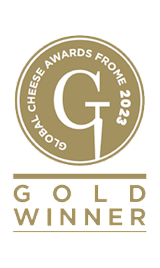
Global Cheese Awards - Gold
2023, 2018

World Championship Cheese Contest - Best of Class
2024, 2022, 2020, 2018, 2016, 2014, 2012, 2010
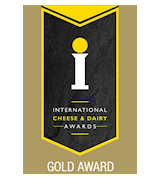
International Cheese Awards - Gold
2024, 2023, 2022, 2019
BEST Arla Cheeses
Hallegaard is a farm located in the rural area of Denmark, near the village of Østermarie. This farm specializes in producing high-quality meat products, based on traditional methods without the use of nitrites or artificial additives. Hallegaard prides itself on its commitment to natural and sustainable agriculture, creating meat and products that reflect authenticity and quality.
On the farm, animals are allowed to graze freely throughout the year, which contributes to the better flavor of the meat. All products are made with great respect for tradition and craftsmanship, focusing on preserving the natural environment and sustainable practices.
BEST Hallegaard Meat Products
AWARDS

IWSC- International wine & spirit competition - Spirit Gold
2020

World Gin Awards - Country Winner
2022
BEST BeGin Cph ApS Spirits
Nykur Vodka is a premium organic vodka that harmoniously blends superior organic grains from Northern Italy with pristine volcanic mountain water sourced from the depths of the Kirvi range in the Faroe Islands. The brand draws inspiration from the Nykur, a mythical creature from Faroese folklore, often depicted as a shimmering grey horse emerging from lakes, symbolizing allure and mystery.
This cultural reference underscores Nykur Vodka's commitment to honoring heritage while delivering a product of exceptional purity and quality. The vodka is crafted using EU-organic certified ingredients, emphasizing sustainability and environmental responsibility.
AWARDS

SWSC - Singapore World Spirits Competition - Double Gold
2023

Bartender Spirits Awards - Double Gold
2021

The Luxury Masters - Gold
2023
BEST Nykur Spirits Spirits
AWARDS

ISC-International Spirits Challenge - Double Gold
2022, 2021, 2019

IWSC- International wine & spirit competition - Spirit Gold
2023, 2021, 2020
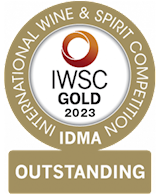
IWSC- International wine & spirit competition - Spirit Gold Outstanding
2023
BEST Aalborg Akvavit Spirits
Stauning Whisky is a Danish distillery located in West Jutland, founded in 2005 by nine friends with diverse backgrounds, including a doctor, a butcher, and several engineers. The distillery emphasizes traditional production methods, such as floor malting of locally grown barley and rye and direct heating of small copper stills, resulting in whisky with a unique Danish character.
Stauning has received international acclaim for its innovative approach and high quality, and in 2015, Diageo invested in the distillery to support its growth and development.
AWARDS

IWSC- International wine & spirit competition - Spirit Gold
2024, 2021, 2020

The World Whiskey Masters - Gold
2023, 2022
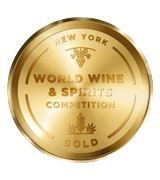
NYWSC - New York World Spirits Competition - Gold
2024, 2023
BEST Stauning Spirits
TABLE OF CONTENTS
Best Danish Food Products
Friis-Holm Filled Chocolate Medals is an exclusive collection of 18 meticulously crafted pralines that blend the art of chocolate-making with imaginative and unexpected flavor combinations. Each piece offers a distinct personality, ranging from the refreshing notes of absinthe and geranium, to the aromatic depth of sloe gin and plum in port wine, to the fruity brightness of blackcurrant and the richness of salted caramel.
Awarded at international competitions, these pralines are designed to take you on a unique sensory journey through layered tastes and refined textures. This collection is perfect for true chocolate connoisseurs seeking something extraordinary, whether for personal indulgence or as an elegant gift.
AWARDS

International Chocolate Awards - Gold
2020
Friis-Holm Herslev Malt Caramel Chocolate is a masterfully crafted bar that brings together the richness of fine cacao with the warm, toasted depth of malt and the smooth sweetness of caramel. The result is a beautifully layered flavor profile that is both comforting and refined, with a soft balance between roasted notes and gentle sweetness.
Every bite reveals the brand’s signature attention to detail and commitment to authentic, high-quality ingredients. This chocolate bar is a true expression of Friis-Holm’s creative approach to taste, offering a distinctive and memorable indulgence for those who appreciate complexity and elegance in their chocolate.
AWARDS

International Chocolate Awards - Gold
2024
Friis-Holm Filled Chocolate Stauning Whisky offers a sophisticated fusion of premium dark chocolate and distinctive Danish whisky, crafted for true connoisseurs of rich and layered flavors. These pralines are made with Johe 70% dark chocolate, known for its rounded, deep cocoa profile.
The filling features Stauning KAOS Triple Malt whisky, celebrated for its smoky and complex character. This combination creates a harmonious balance between the intensity of fine cacao and the depth of the whisky, delivering a unique sensory experience.
AWARDS

International Chocolate Awards - Gold
2024
Blamusling No. 1 is a distinctive marinated blue mussel product crafted by Fangst, a Danish brand celebrated for its sustainable approach to Scandinavian seafood. These mussels are marinated in a delicate infusion of dill and fennel seeds, creating a unique, Nordic flavor profile.
The mussels, which are MSC-certified for sustainability, are sourced from the pristine waters of the Limfjord in Denmark.
AWARDS

World's 101 Best Canned Products from the Sea - Top 10 Seafood
2024
O'Payo Milk 50% is a premium chocolate product crafted by Friis-Holm, a renowned Danish chocolate maker. This chocolate bar is characterized by its rich and creamy texture, owing to its 50% milk chocolate content. The cacao used in O'Payo Milk 50% is sourced from Nicaragua, ensuring a high-quality and unique flavor profile.
Friis-Holm is well-known for their meticulous attention to detail and commitment to sustainable and ethical sourcing practices in the production of their chocolates.
AWARDS

International Chocolate Awards - Silver
2020, 2018

Academy of Chocolate - Silver
2017

International Chocolate Awards - Gold
2024, 2019
The product Dark Milk 55% made by Friis-Holm is an artisanal chocolate bar that combines the creaminess of milk chocolate with the rich, complex flavors of dark chocolate. It has a cocoa content of 55%, which provides a balanced taste profile that is neither too sweet nor too bitter.
Friis-Holm, a Danish chocolate maker, is known for its meticulous attention to detail and commitment to high-quality ingredients, often sourcing single-origin cacao beans to ensure unique and nuanced flavor experiences. This particular bar exemplifies their dedication to crafting premium chocolate with a luxurious texture and sophisticated taste.
AWARDS

International Chocolate Awards - Bronze
2020

Academy of Chocolate - Bronze
2017

International Chocolate Awards - Gold
2024, 2023
Friis-Holm Dark Milk 65% is a premium chocolate bar crafted by the Danish chocolatier Friis-Holm. It combines the richness of dark chocolate with the creaminess of milk chocolate, striking a balance at 65% cocoa content. The chocolate is known for its smooth texture and complex flavor profile, which includes notes of caramel and a hint of fruitiness.
The beans used are often single-origin, sourced meticulously to ensure high quality and sustainability. This product is frequently praised in gourmet chocolate circles for its depth and refined taste.
AWARDS

International Chocolate Awards - Gold
2017, 2014

International Chocolate Awards - Silver
2023, 2022, 2020
O'Payo Milk 50% - Sansho is a product crafted by Friis-Holm, a renowned Danish chocolate manufacturer. Friis-Holm is celebrated for its dedication to high-quality, small-batch chocolate, using fine single-origin cacao beans. The "50%" indicates the percentage of cacao content, revealing that it is a milk chocolate blend with a balanced flavor profile.
The term "Sansho" refers to a unique ingredient often associated with Japanese cuisine, known for its citrusy and peppery notes, which adds a distinct and exotic flavor twist to this milk chocolate.
AWARDS

International Chocolate Awards - Gold
2020, 2019

International Chocolate Awards - Silver
2024, 2023, 2022, 2018
O'Payo Milk 50% - Chunky Salty Liquorice is a unique chocolate product crafted by Friis-Holm, a Danish chocolatier known for its high-quality and ethically sourced chocolates. The product combines a creamy 50% milk chocolate base with the bold and distinctive flavor of salty liquorice, creating a balanced and intriguing taste experience.
This combination is particularly appealing to those who appreciate the Scandinavian tradition of integrating liquorice into various confections. Friis-Holm prides itself on maintaining sustainable practices and partnering with local farmers for cacao sourcing, ensuring both the quality of their products and the welfare of the farming communities.
AWARDS

International Chocolate Awards - Silver
2020, 2019

International Chocolate Awards - Bronze
2018

International Chocolate Awards - Gold
2024, 2023
The product Løgismose 76% Mørk is a dark chocolate made by Friis-Holm. Friis-Holm is renowned for its high-quality chocolates, often characterized by meticulous craftsmanship and an emphasis on unique flavor profiles. This particular chocolate bar features a 76% cocoa content, which suggests a rich and intense chocolate flavor typically appreciated by dark chocolate enthusiasts.
The chocolate is likely to be crafted from fine cocoa beans, reflecting the brand's commitment to excellence in sourcing and production. However, specific details regarding the cocoa origin, tasting notes, or additional ingredients are not confirmed here.
AWARDS

International Chocolate Awards - Gold
2019

International Chocolate Awards - Bronze
2019
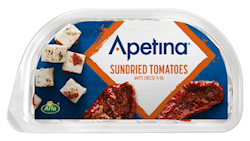
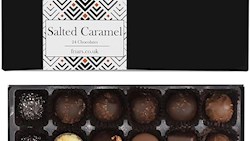
TasteAtlas food rankings are based on the ratings of the TasteAtlas audience, with a series of mechanisms that recognize real users and that ignore bot, nationalist or local patriotic ratings, and give additional value to the ratings of users that the system recognizes as knowledgeable. For the “Top 100 Danish Foods” list until April 20, 2025, 2,971 ratings were recorded, of which 2,603 were recognized by the system as legitimate. TasteAtlas Rankings should not be seen as the final global conclusion about food. Their purpose is to promote excellent local foods, instill pride in traditional dishes, and arouse curiosity about dishes you haven’t tried.
